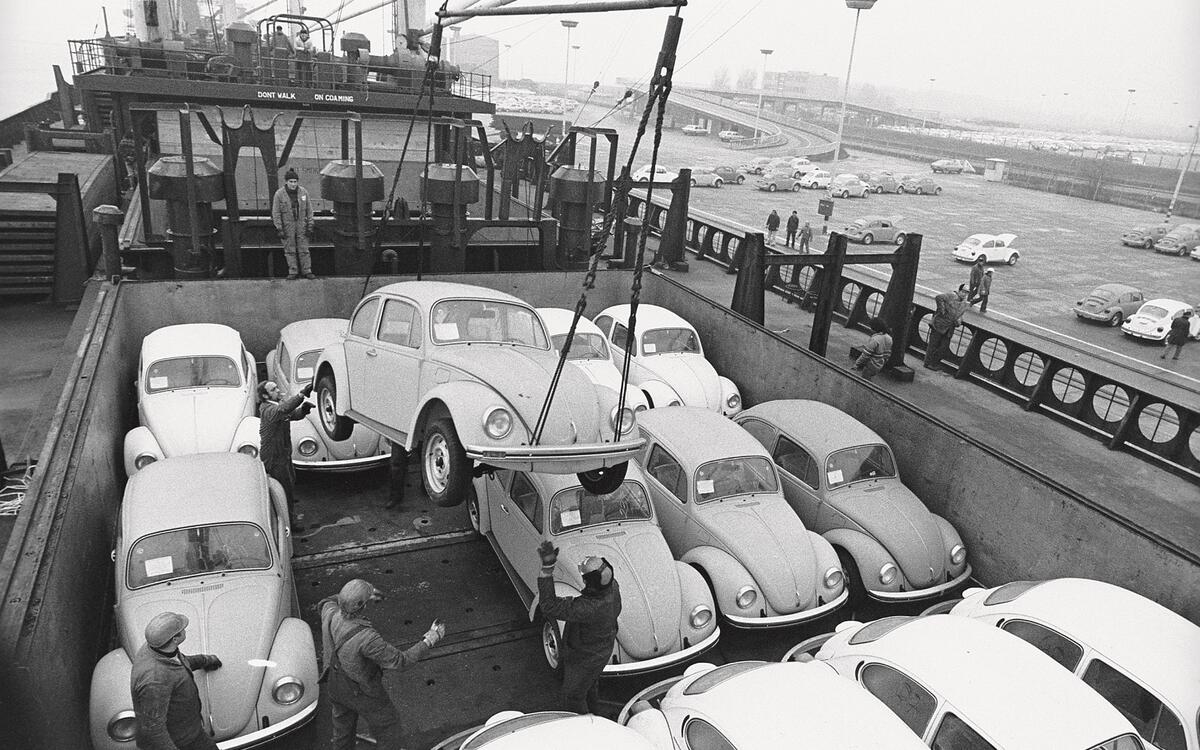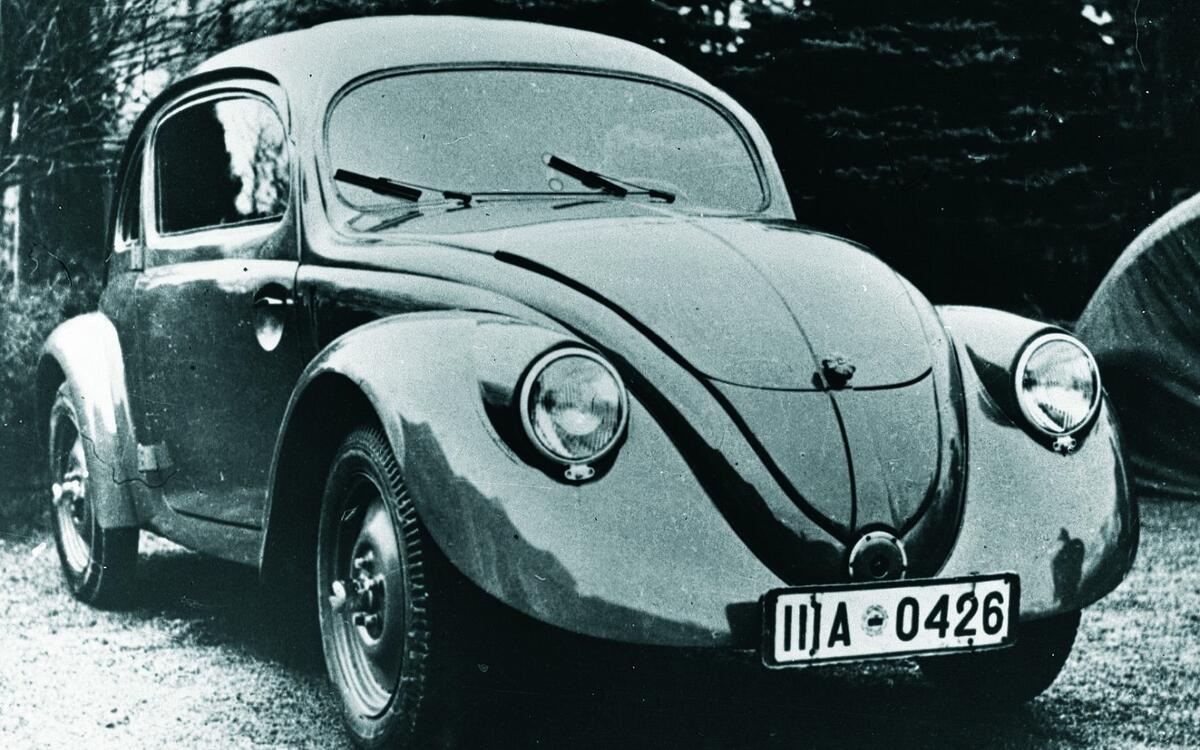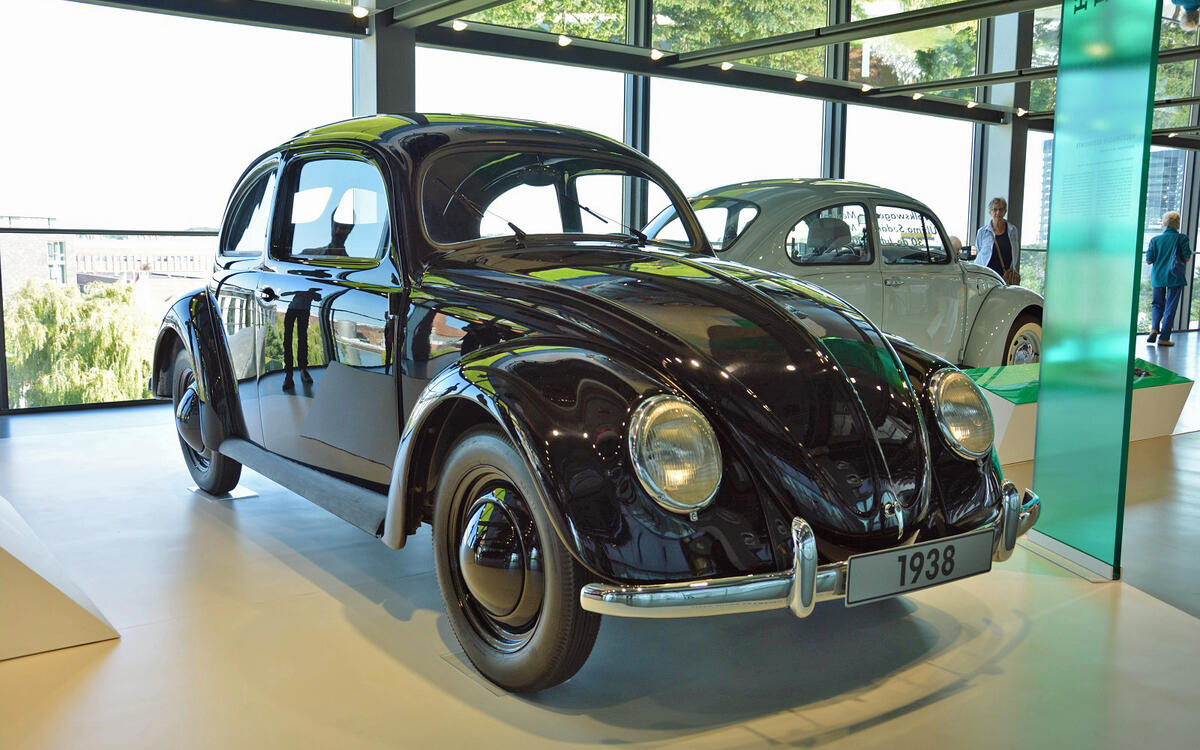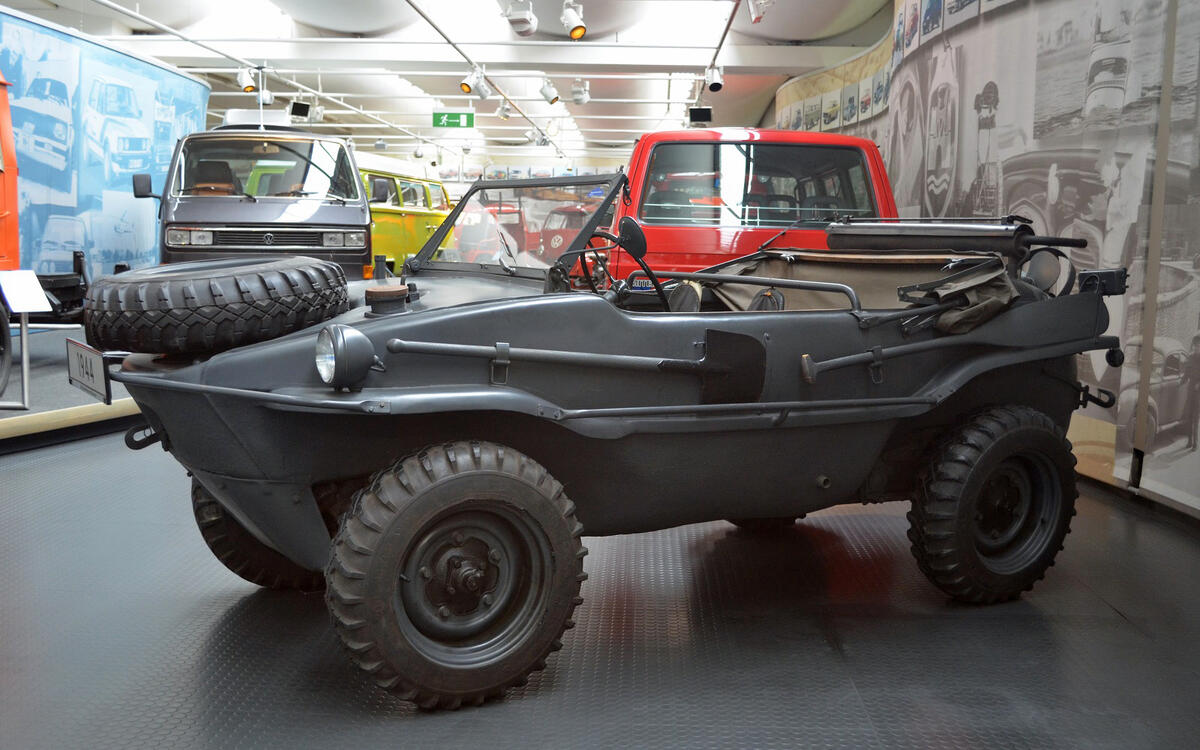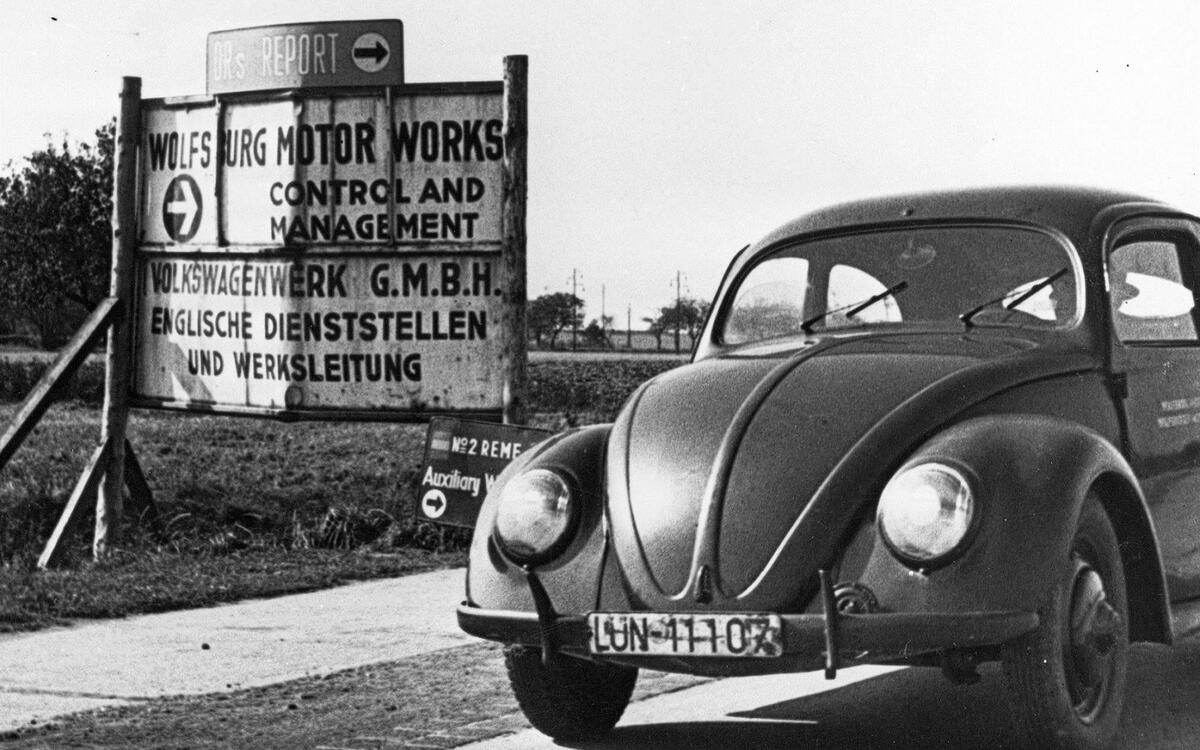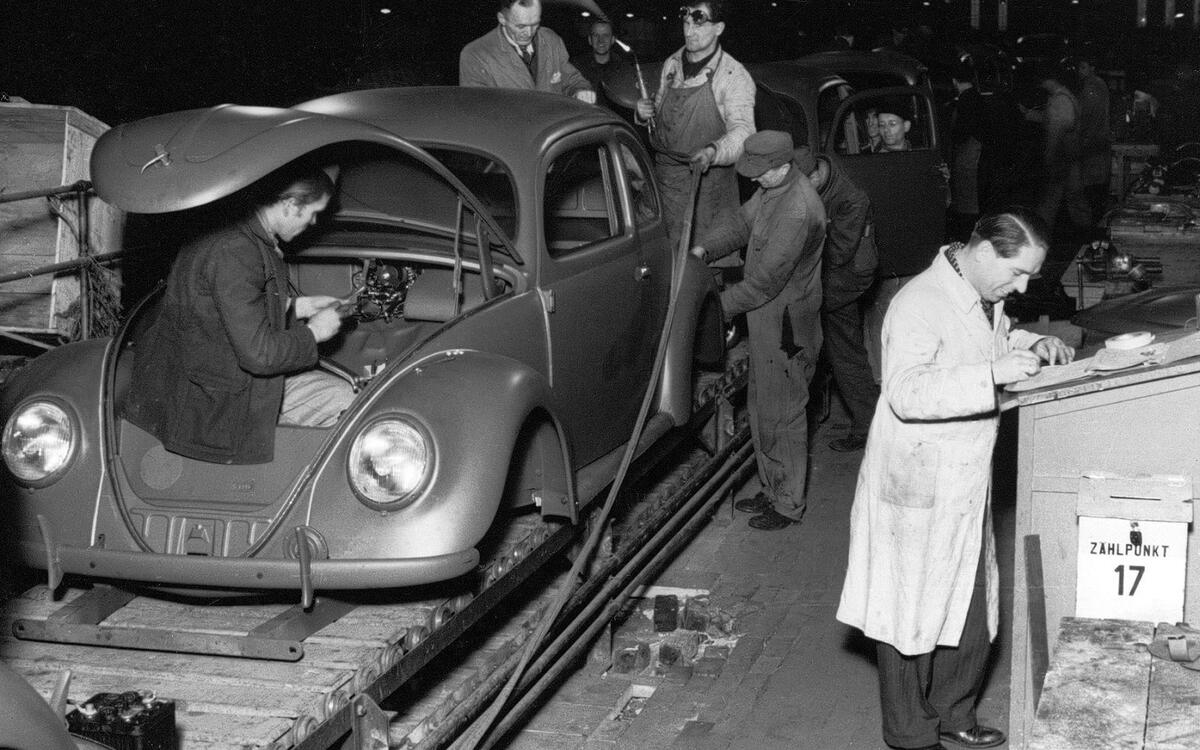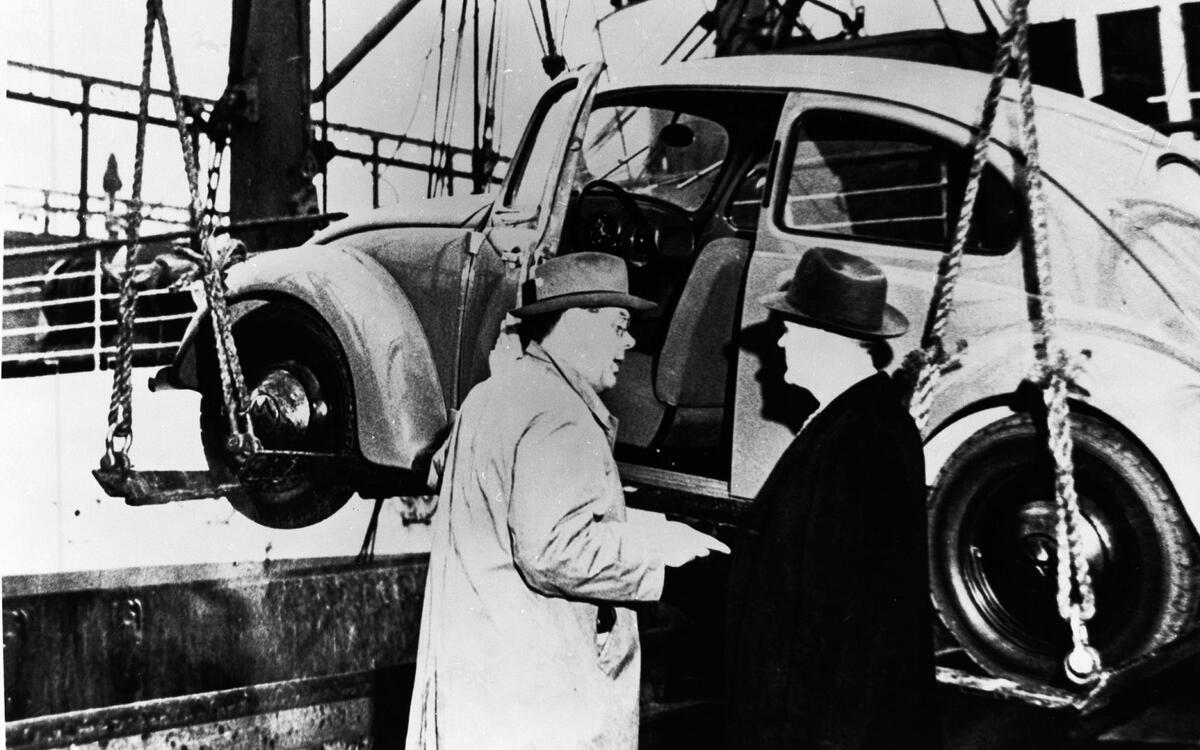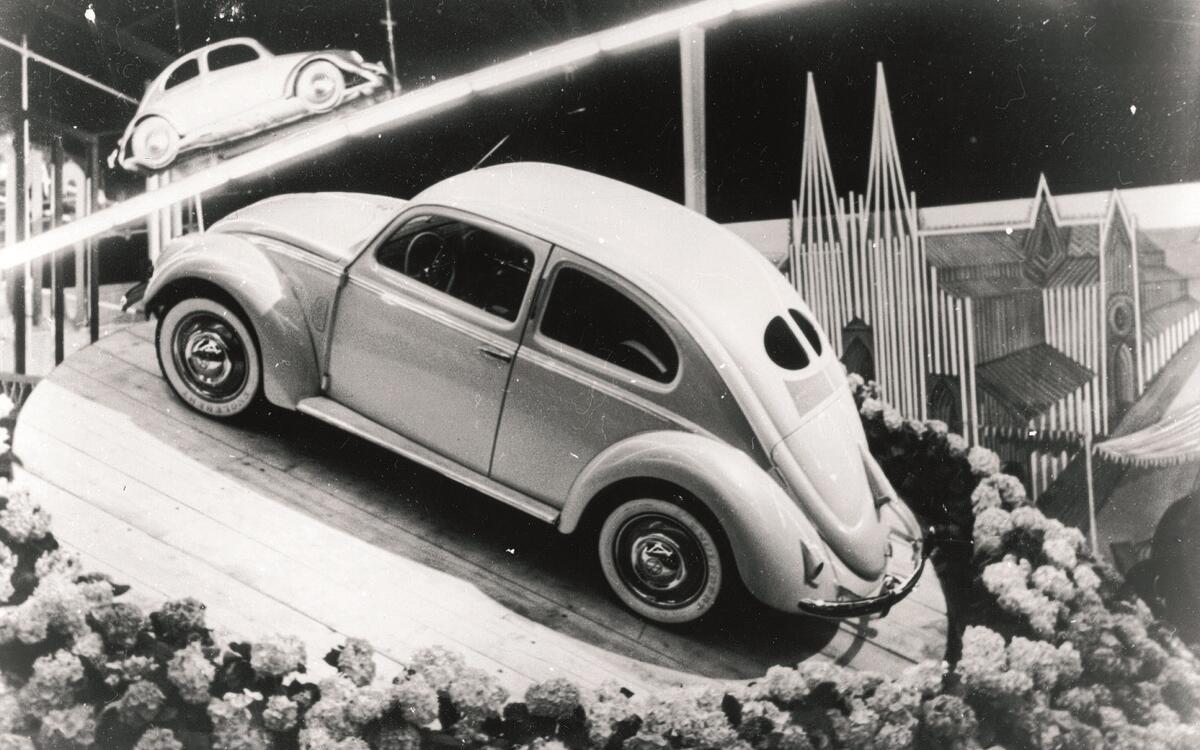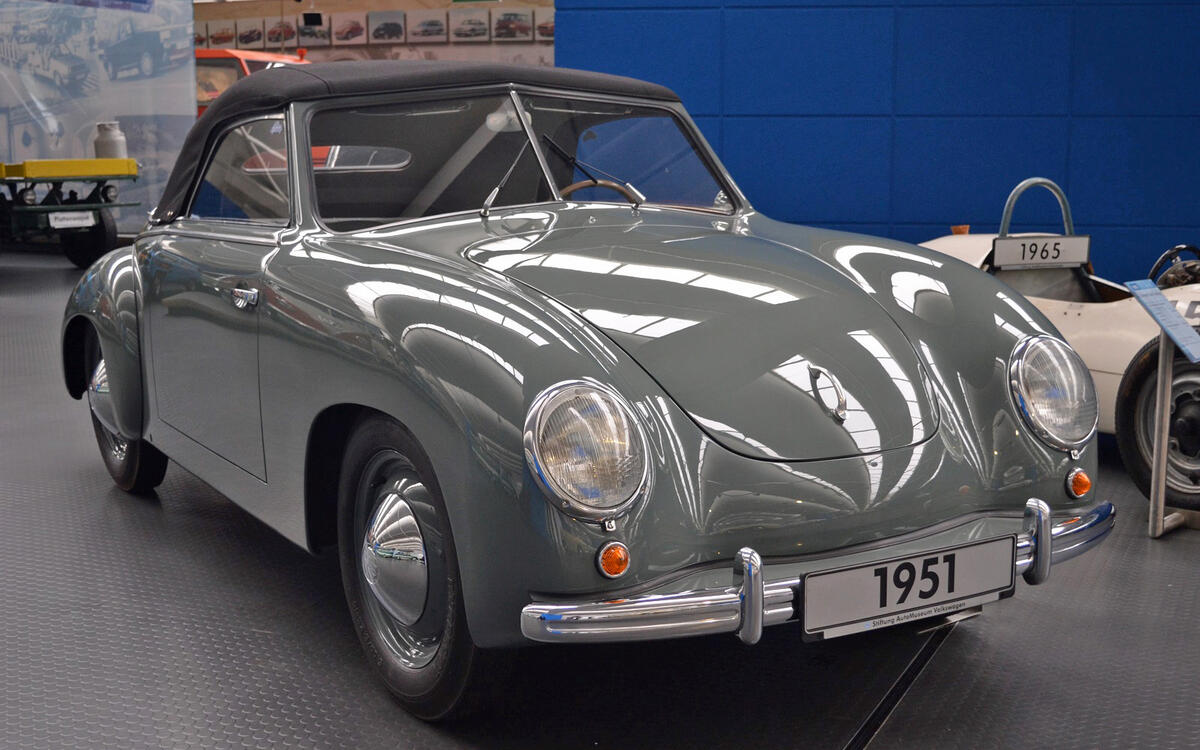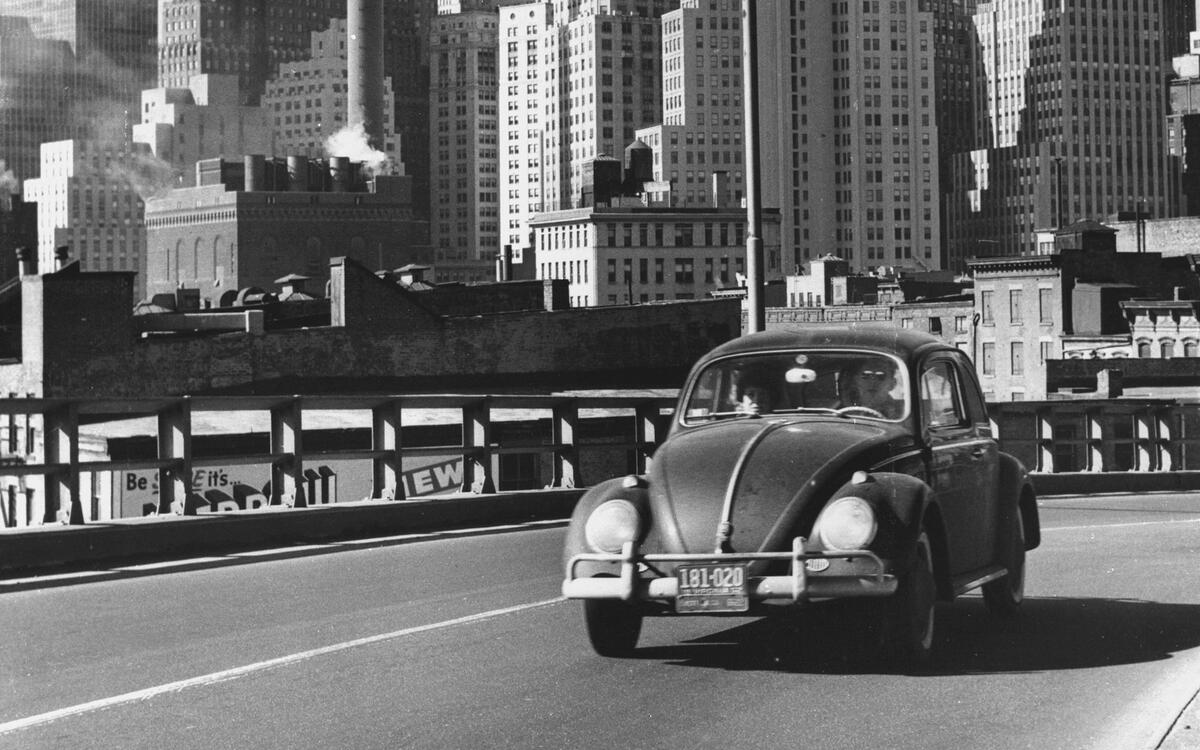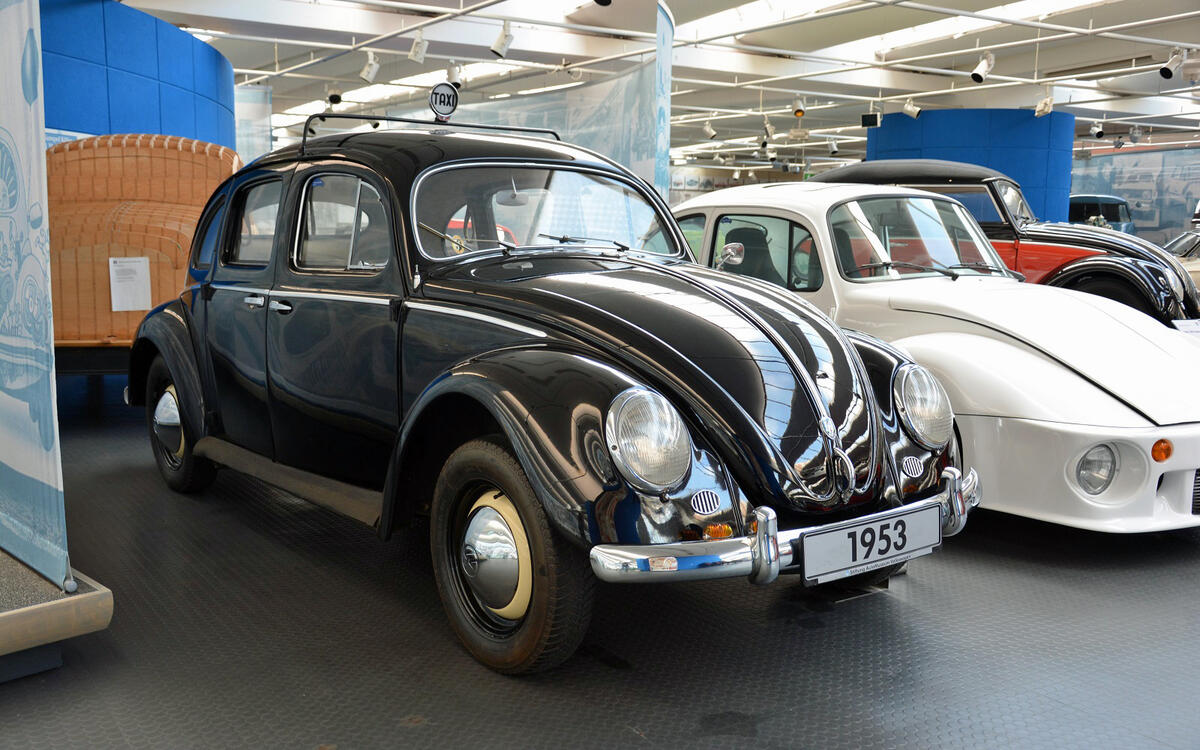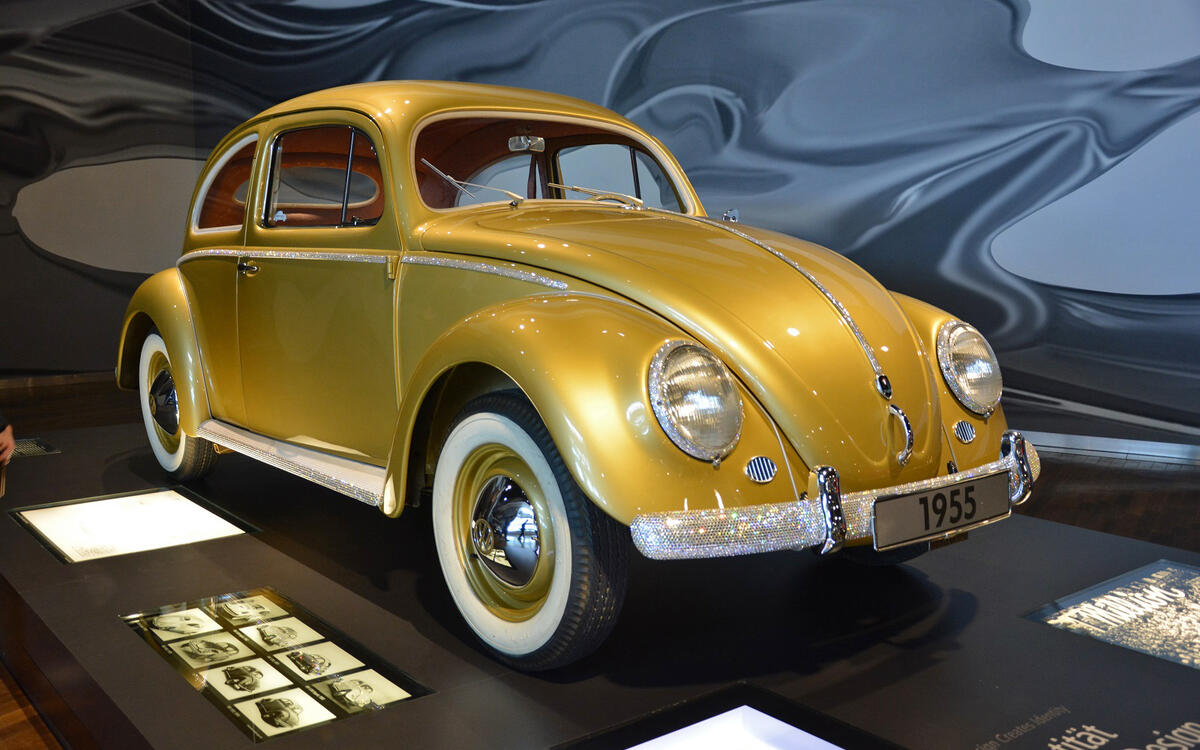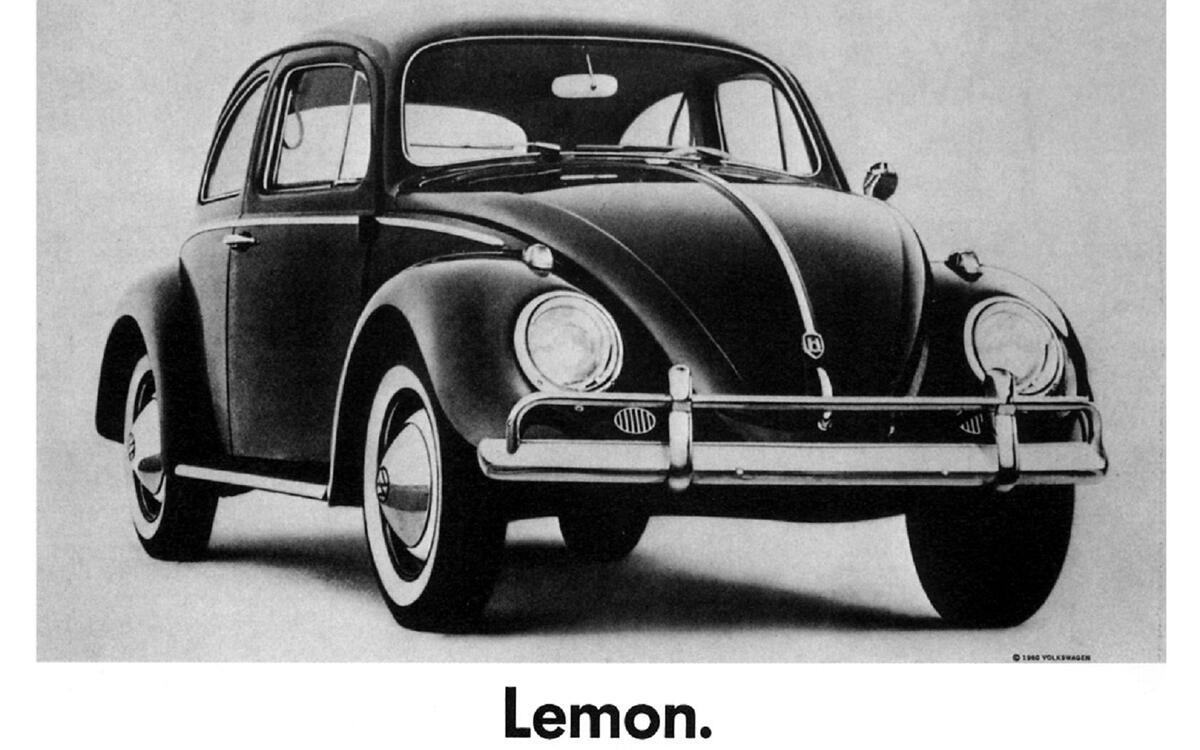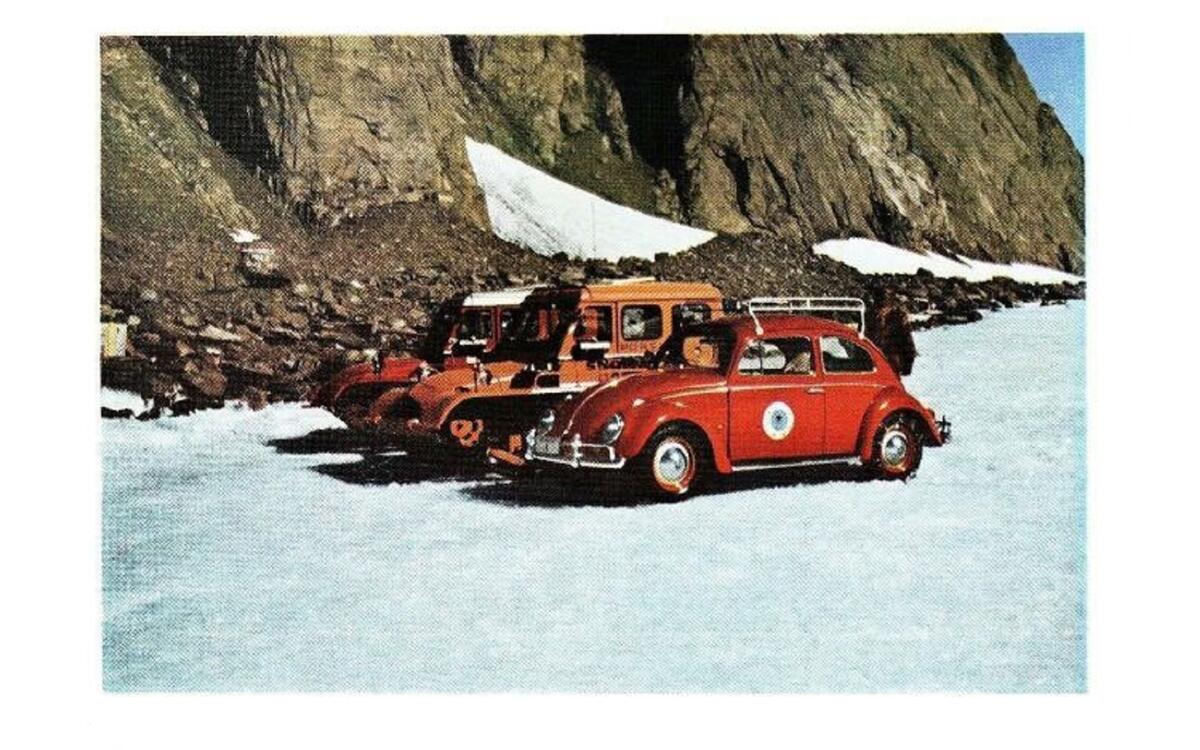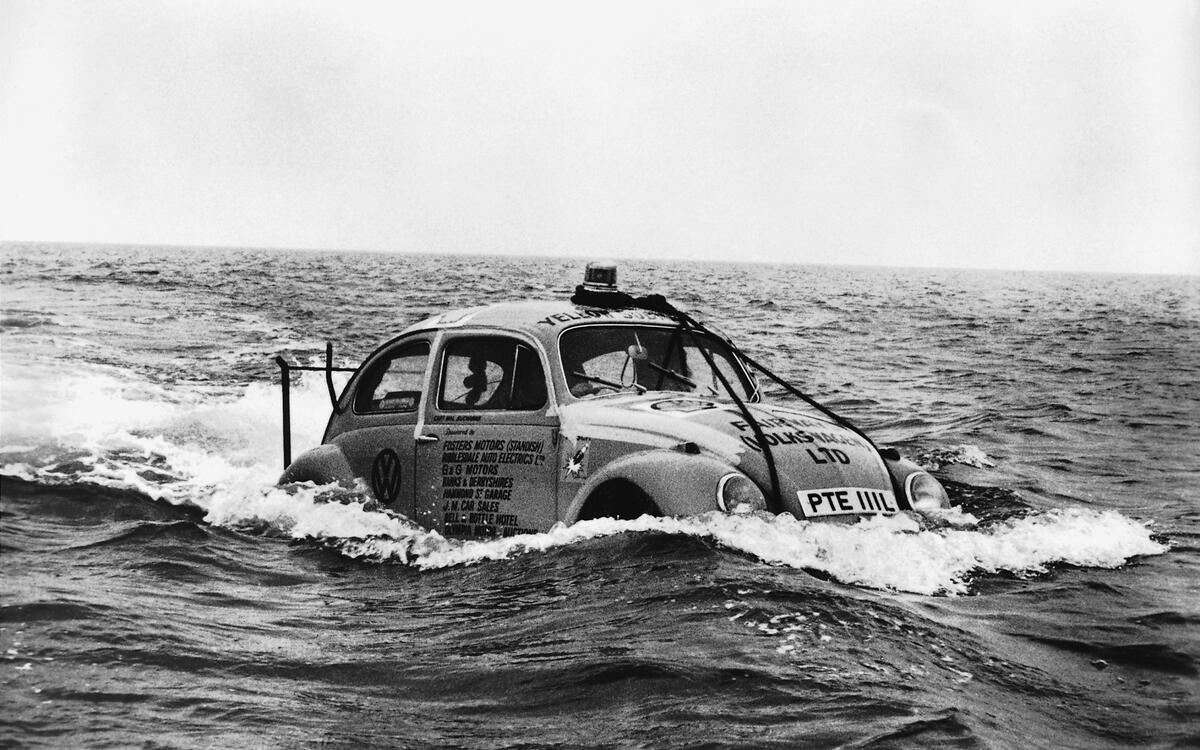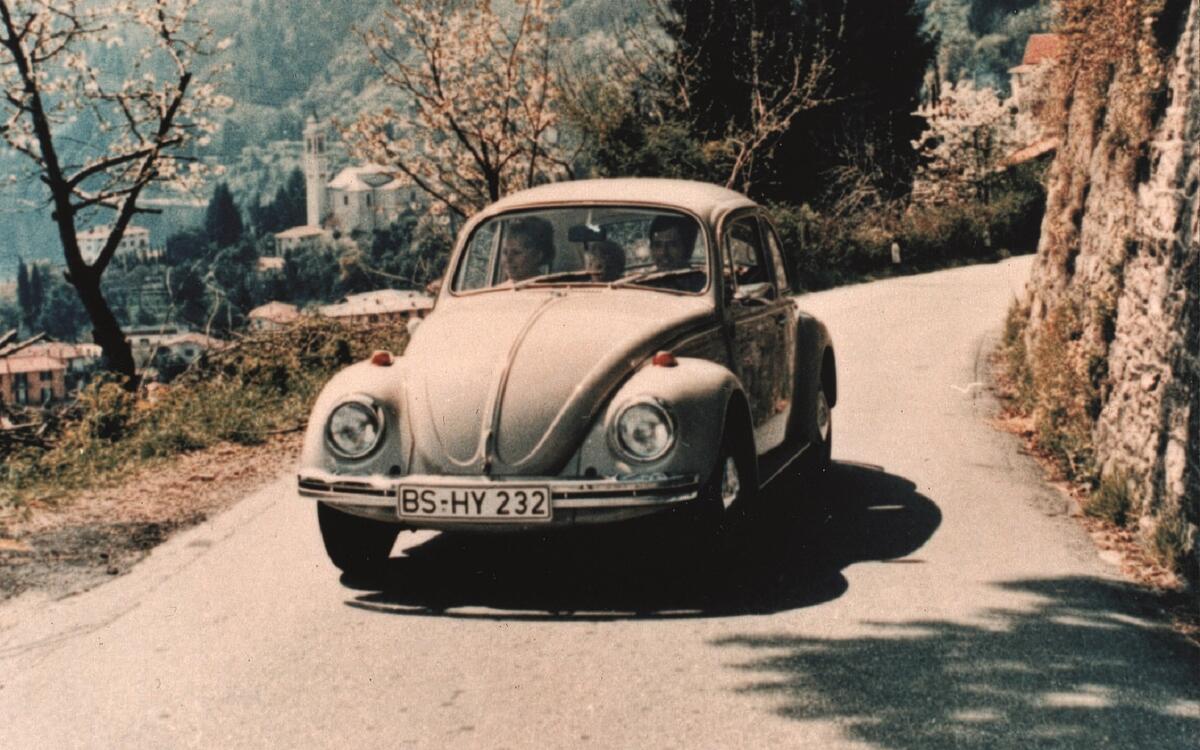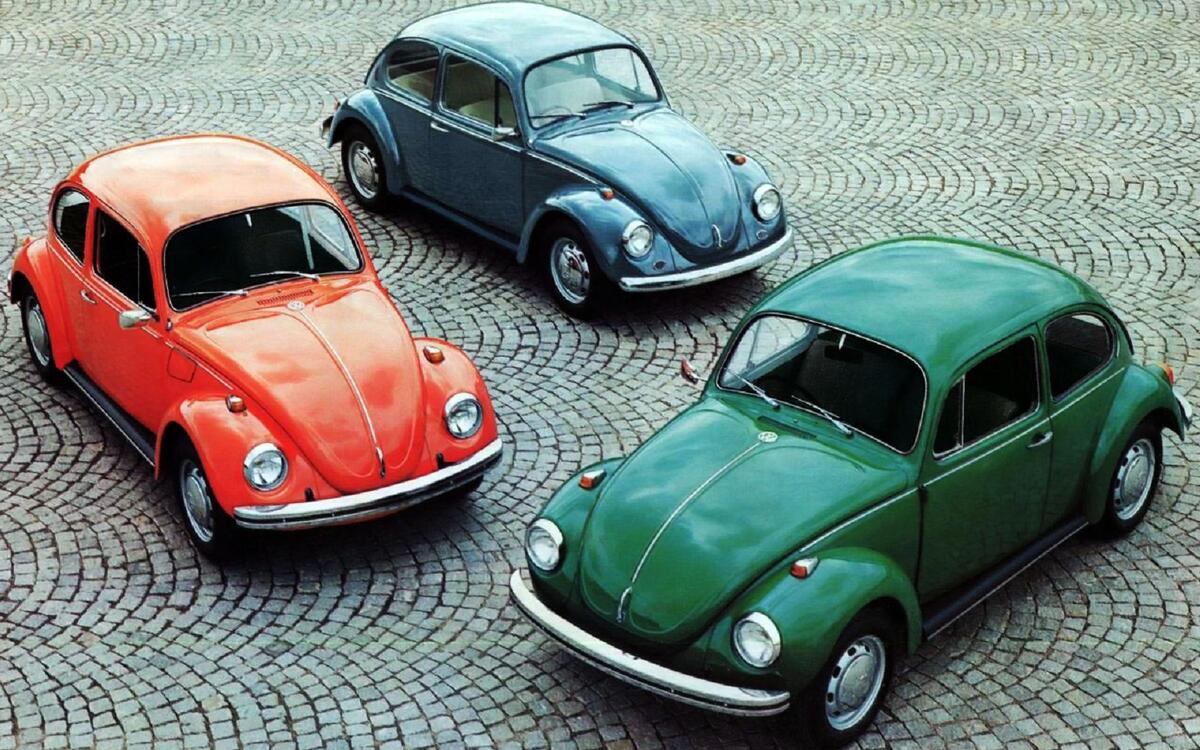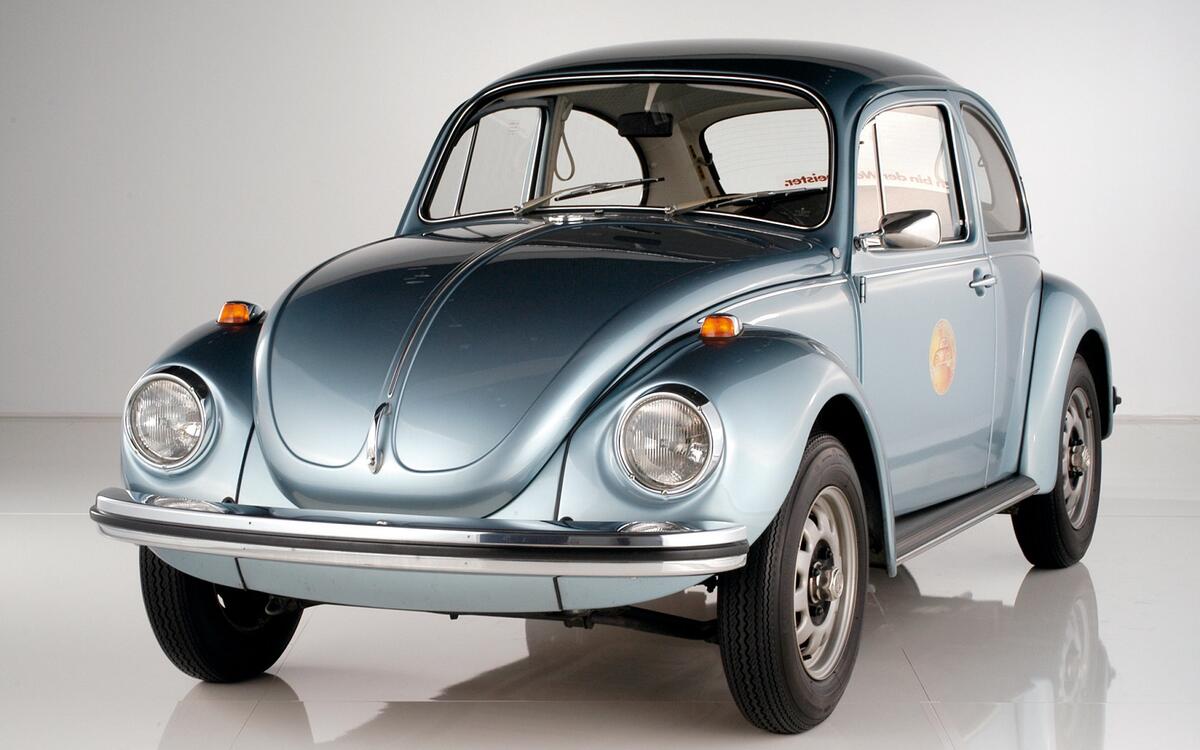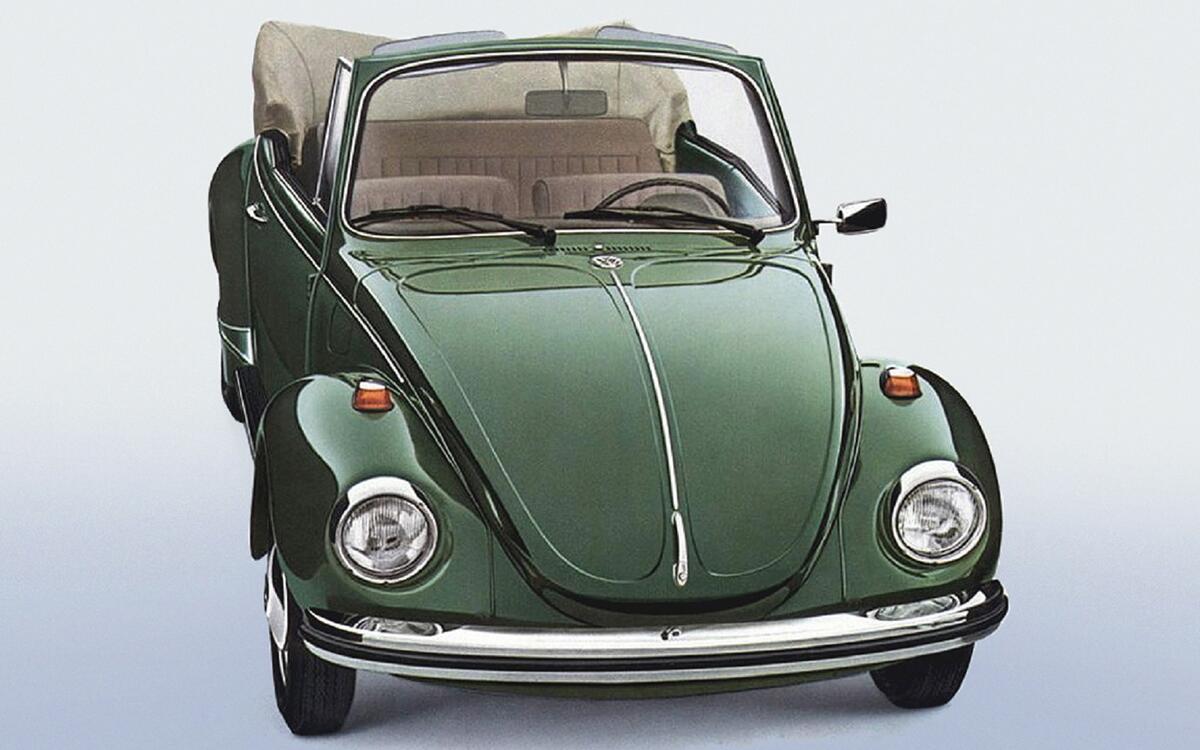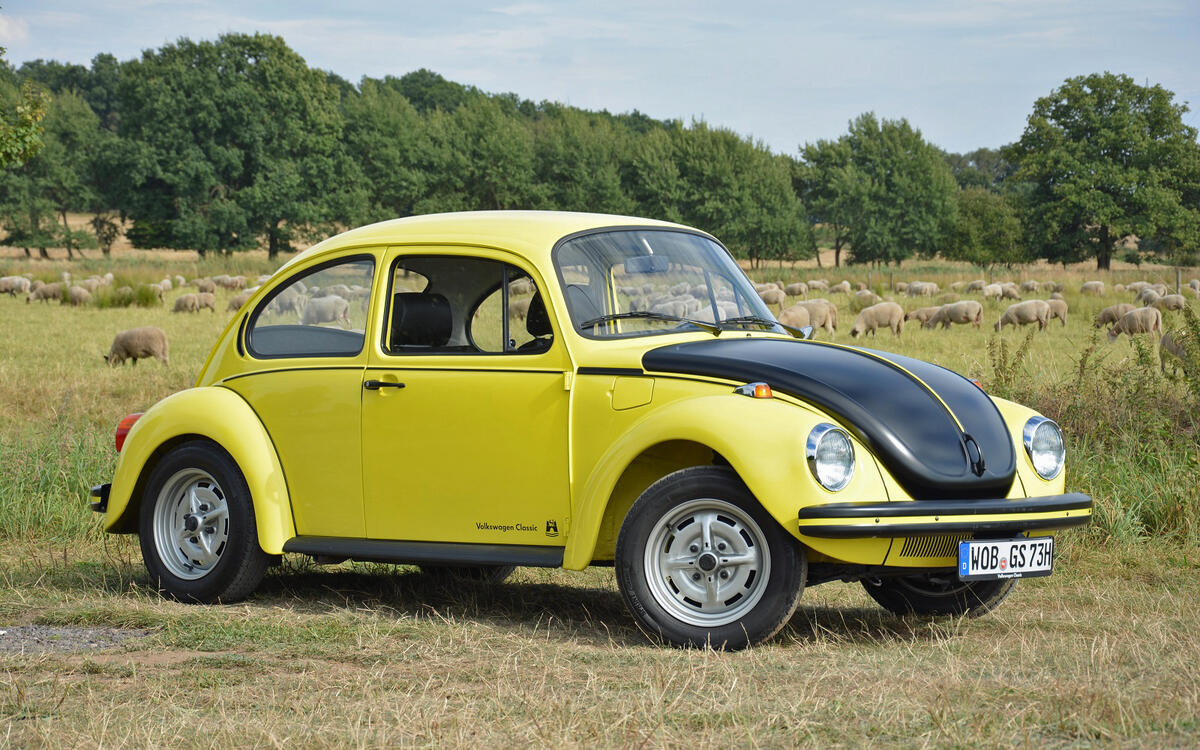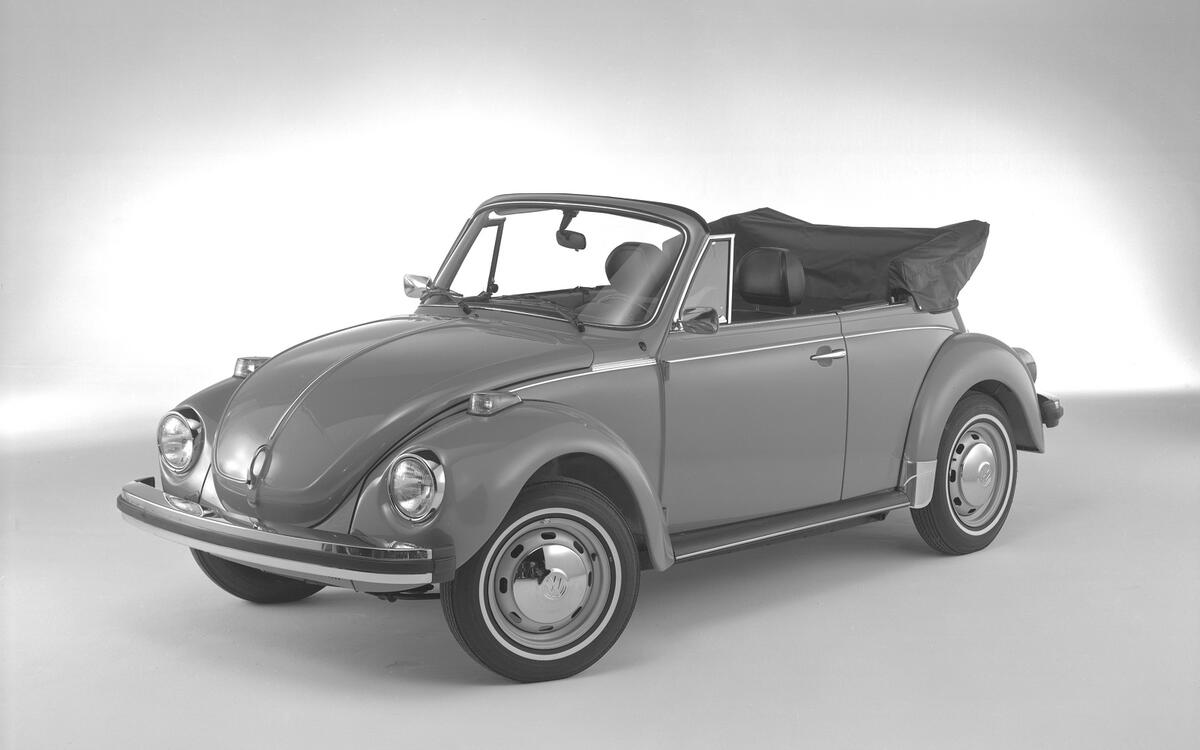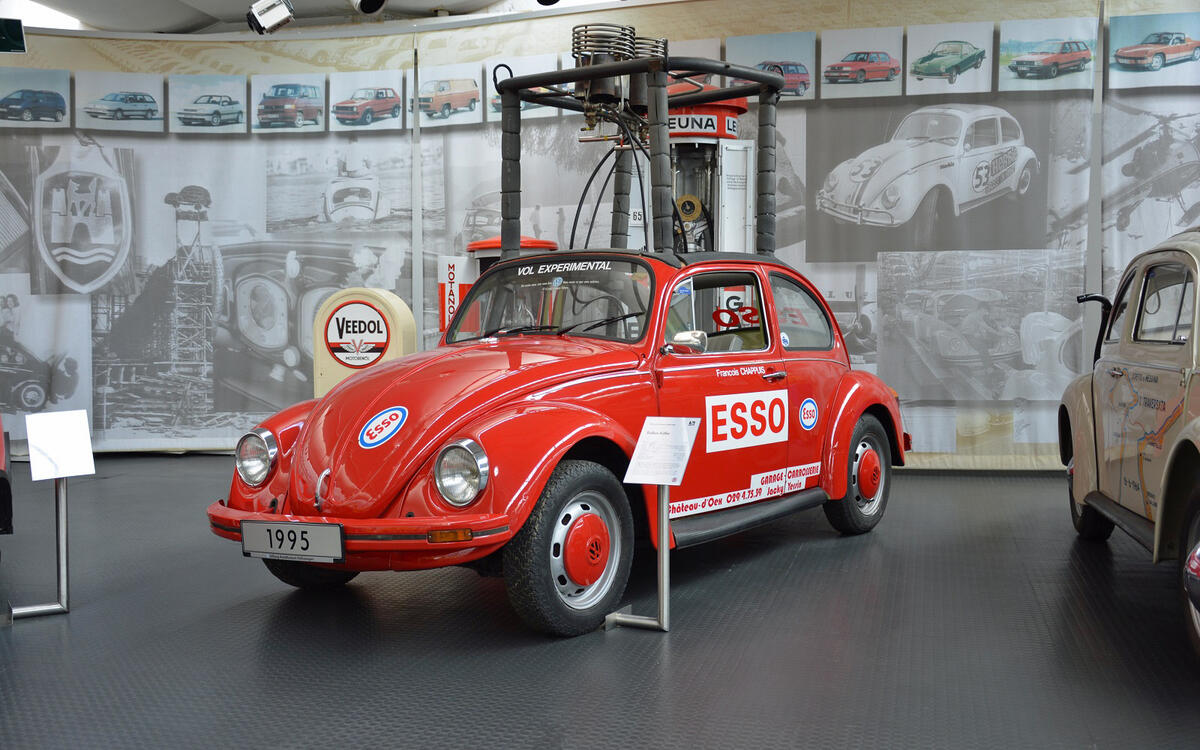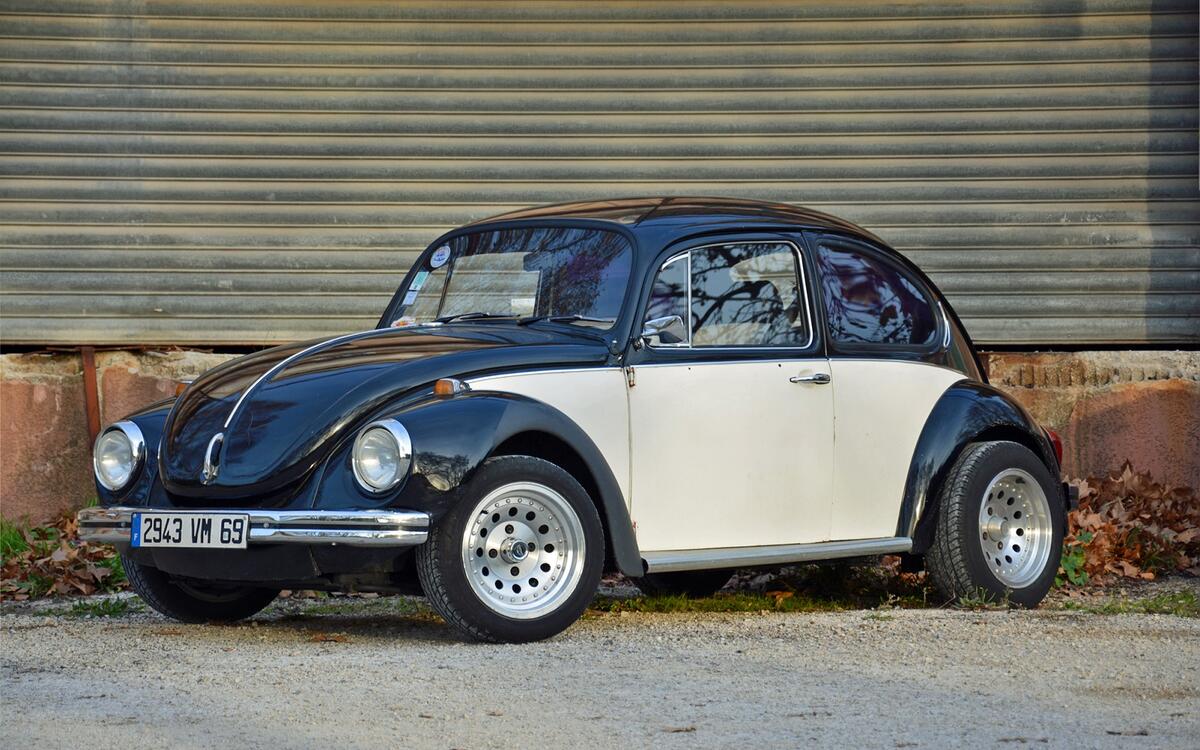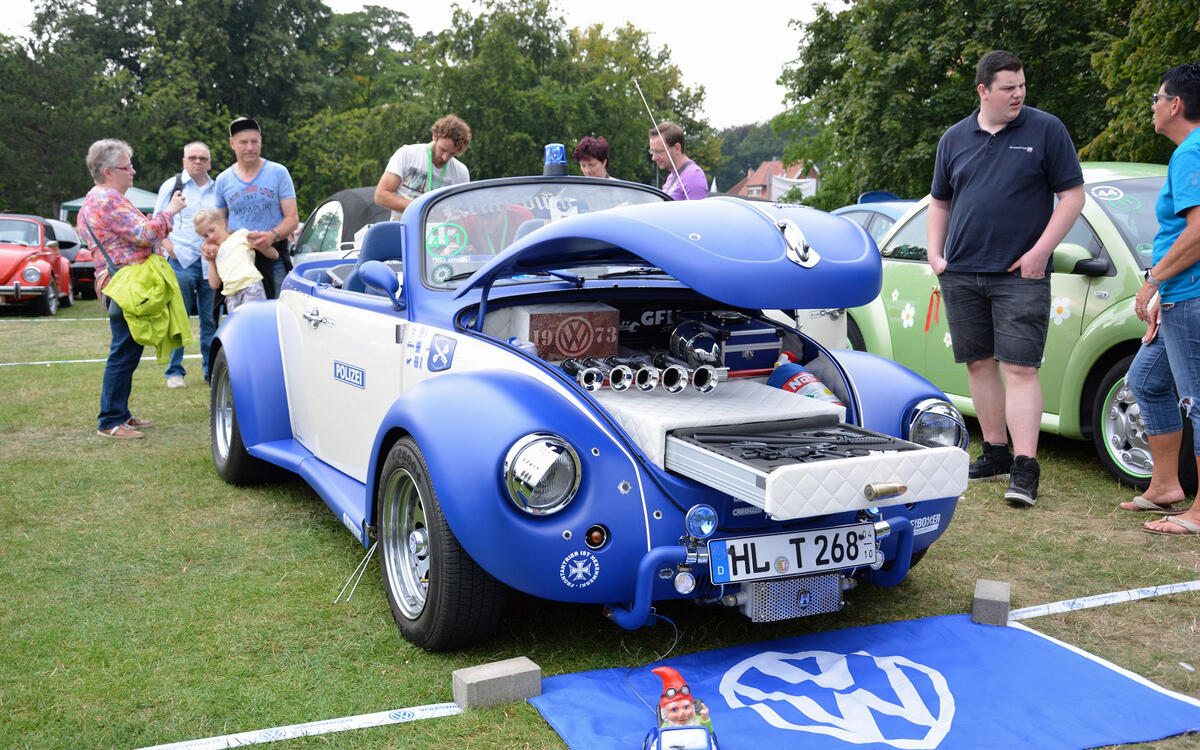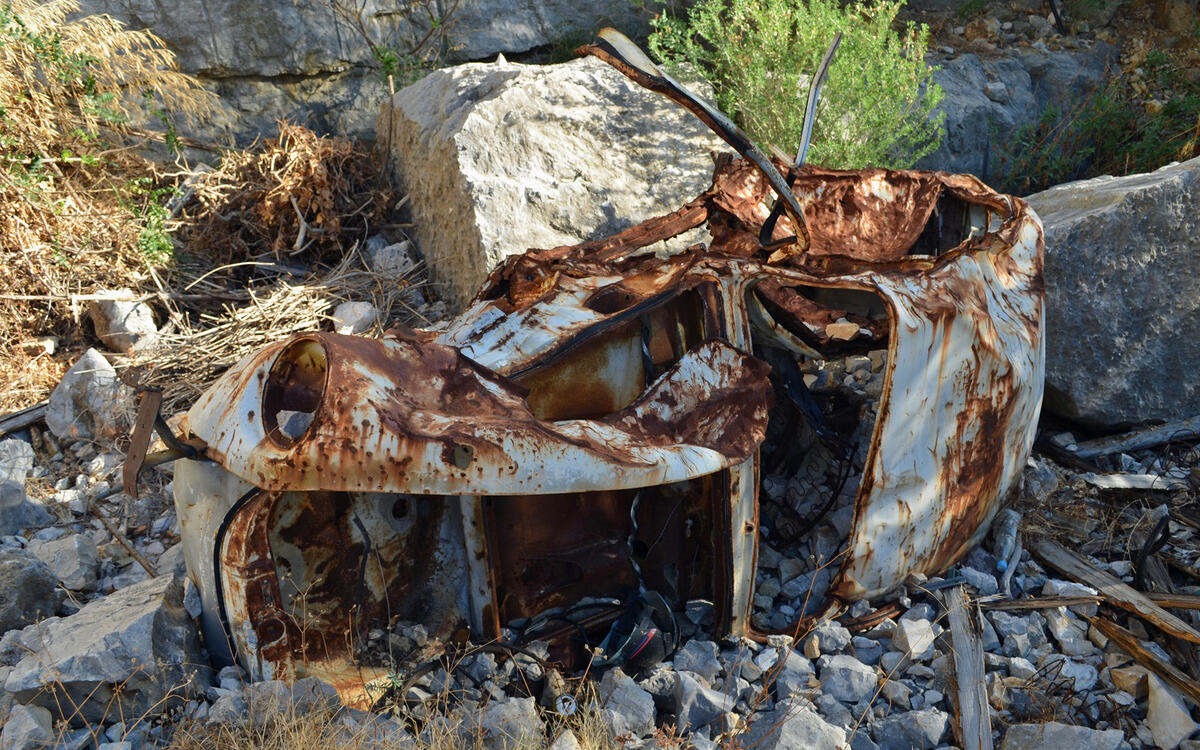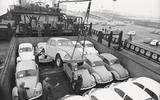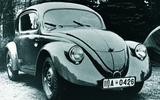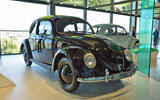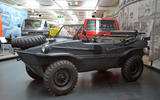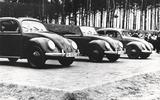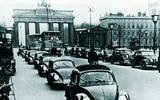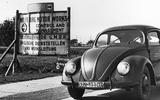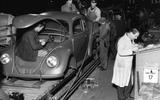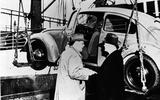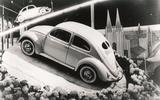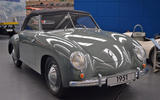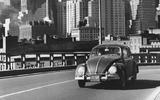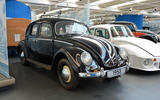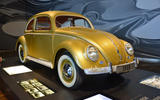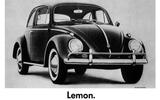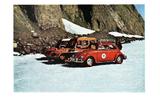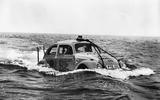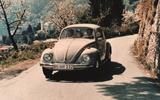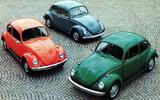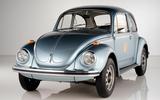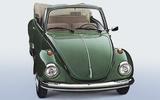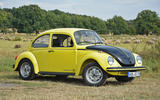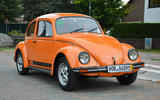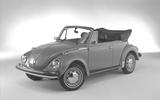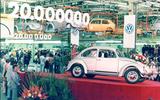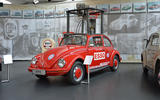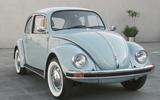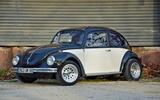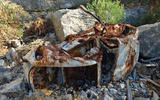 Slide of
Slide of
The third-generation VW Beetle has come to the end of its life.
The last one was produced today. At 81 years old, the Volkswagen Beetle has been everywhere and it has done it all. It started life as a people’s car in Germany, it became America’s darling before heading south to put much of Latin America on wheels and it is now one of the most sought-after classic cars. It has conquered land, water and air. It has won races, shuttled scientists in Antarctica and carried millions of passengers in Mexico City.
Join us as we explore the Beetle’s multifaceted history.
 Slide of
Slide of
Porsche’s vision
Engineer Ferdinand Porsche is associated with some of the greatest designs in automotive history, including Auto-Union’s formidable 16-cylinder race cars and, of course, the high-performance machines that bear his name. Yet from an early age he envisioned a simple, basic car that even factory workers could afford. This was slightly less than revolutionary in an era when cars were an expensive commodity and many intended to keep them that way.
Adolf Hitler shared Porsche’s vision of a small car and gave him the means to design one. The early design brief called for a 650kg four-seater model capable of maintaining 62mph with a one-liter engine rated at approximately 26hp. It needed to be air-cooled to keep running in Germany’s colder regions. Note: early prototype pictured.
 Slide of
Slide of
The type 60 (1938)
German officials considered outsourcing production of the Volkswagen to an established auto-maker but they ultimately decided to built it themselves in a state-owned factory. Testing began in 1936 and Porsche built the first pre-production prototypes of what would become the Beetle in 1938. Called type 60 internally, it was very close to the regular-production Beetle in nearly every aspect.
 Slide of
Slide of
The Beetle during the war
Volkswagen workers built 210 examples of the Beetle by hand before World War II broke out.
During the war, Porsche’s design office adapted the Beetle for military use by raising its ground clearance, adding four-wheel drive and fitting a more powerful engine. The basic chassis also spawned the Kubelwagen and the amphibious Schwimmwagen (pictured), which were sent to fight in Europe and in Africa as Germany’s home-brewed answer to the Jeep.
 Slide of
Slide of
The Beetle nearly replaces the 2CV (1940)
In July 1940, the German forces occupying France examined early Citroen 2CV prototypes sitting on the idle assembly line. They asked Citroen to hand over three cars -- which officials promised would only be shown to Hitler, not the company's rivals -- and offered to send a version of Germany's new people's car. Documents in Citroen's archives department don't mention the Beetle by name but they note Germany volunteered to send the car's creator, Ferdinand Porsche, to France to answer questions about it.
Citroen had no interest in building the Beetle. The Germans returned with the same offer six times; the French firm stood its ground. They brought a Beetle on their final visit. Citroen ordered its workers to immediately cover it with a tarp and ordered everyone present to ignore it. The firm never built a single Beetle. It notes the army's visits partially explained why it completely (and secretly) redesigned the 2CV during the war.
 Slide of
Slide of
The postwar years
The Allied Forces bombed the Wolfsburg factory repeatedly. When peace returned, the facility could only produce cars on sunny days because air raids destroyed most of its roof. Workers nonetheless managed to make a small handful of Beetles by hand while stepping over debris and dodging falling bricks. In the postwar years, the factory was the only source of work in the area.
The plant ultimately fell into what was designated the British zone of Germany. The British military opened a repair shop in it to keep employees busy while exploring every available option to find a solution to the Wolfsburg problem.
 Slide of
Slide of
The world’s most undesirable car
In 1945, a British commission headed by William Rootes visited the rubble and bluntly recommended knocking down the plant. Commission members didn’t want the Beetle, either. ‘The vehicle does not meet the fundamental technical requirements of a motorcar,’ Rootes concluded. He added the Beetle – which he called ugly and noisy – wouldn’t present a threat to British cars sold around the world if, after a magnificent stroke of luck, the factory somehow managed to mass-produce it.
In March 1948, a delegation including Henry Ford II traveled to Cologne, Germany, to negotiate the terms of a potential takeover. England was ready to give the Volkswagen factory to Ford for free in a last-ditch bid to get rid of it once and for all. Ernest Breech, the firm’s chairman of the board, urged Ford to turn down the offer.
He famously said ‘Mr. Ford, I don’t think what we are being offered here is worth a damn!'
 Slide of
Slide of
The road to recovery
With the Americans out of the picture, the British later gave control of the Wolfsburg factory to the German state and placed a former General Motors executive named Heinz Nordhoff in charge of it. Quickly, he proved wrong the skeptics who doggedly insisted the Beetle would inspire record amounts of dislike among motorists and die in a few months' time.
Volkswagen built 10,200 examples of the Beetle in 1946. By October 1948, the factory made a car every three and a half minutes, a cadence that represented about 2154 units per month. Better yet, the company needed to fill 15,000 orders placed in Germany and 7000 orders from abroad. The future looked bright.
 Slide of
Slide of
The Beetle arrives in America (1949)
More than a few members of the American military likely left Germany with a Beetle in tow but these private imports were poorly documented. Dutch businessman Ben Pon became the first person to ship a Beetle to the US in order to sell it. The car disembarked in New York City in January 1949.
Pon had no trouble finding a buyer for the Beetle in spite of a prevalent anti-German sentiment. He returned to Holland and shipped another one back to America, which he also sold in record time. He later became America's first Volkswagen importer.
 Slide of
Slide of
America’s first Beetle, by the numbers (1949)
In 1949, the Beetle came with a 1.1-liter air-cooled flat-four engine rated at 30hp. It cost $1280, a figure which converts to approximately $13,000 today. Volkswagen sold merely two examples of the Beetle in America during 1949. Sales went up to 270 units in 1950.
 Slide of
Slide of
The Beetle goes topless (1949)
Stunningly simple, the Beetle was a coachbuilder’s dream. Karmann built the first civilian convertible Beetle in 1949 and other companies quickly took turns putting their own unique spin on Wolfsburg’s people’s car. The example pictured here wears a body made by Dannenhauer & Stauss of Stuttgart, Germany, and it’s equipped with an upgraded engine tuned by Oettinger to make 40hp.
 Slide of
Slide of
The Beetle in the 1950s
Beetle sales sky-rocketed during the 1950s as Volkswagen exported it to an increasing number of countries around the world. While the basic shape of the body stayed the same, the company made several small changes to the design including replacing the split rear window with a single oval unit in 1953 and fitting a new, more powerful engine a year later. Volkswagen manufactured the 500,000th Beetle in July 1953.
 Slide of
Slide of
The four-door Beetle (1953)
Berlin-based coachbuilder Rometsch wisely identified a market for a four-door version of the Beetle, a variant Volkswagen refused to build due largely to a lack of production capacity. It extended the wheelbase by 250mm and added a set of rear-hinged doors. Volkswagen’s records indicate about 50 examples were built. Taxi drivers seeking an extra dose of practicality scooped up most of the production run.
 Slide of
Slide of
The one millionth Volkswagen (1955)
Volkswagen made its one-millionth car in August 1955. Still owned by the firm today, the milestone Beetle received a gold paint job with diamonds embedded into both bumpers, both running boards, the front headlight bezels and nearly every piece of trim. The seats wore commemorative pink upholstery.
 Slide of
Slide of
The Beetle’s glory days (1960s)
The Beetle's popularity swelled during the 1960s, especially in America thanks in part to a clever advertising campaign. Unlike rivals Renault and Fiat, Volkswagen kept large supplies of spare parts close to the American coasts so owners who needed a headlight, for example, could get one in a week instead of waiting a month for it to arrive by boat from Europe.
Cheap, cheerful and reliable, the Beetle became America’s favorite small car. Many Americans bought a Beetle as their first car out of college or as a second car for their family.
Volkswagen exported 423,008 Beetles to America in 1968 alone. In comparison, Volkswagen of America sold about 340,000 cars in 2017. By the 1970s, the Beetle and its various derivatives (including the Bus and the Karmann Ghia) gave Wolfsburg a 5.6-percent share of the new passenger car market in the US.
 Slide of
Slide of
The Beetle in Antarctica (1963)
In the early 20th century, intrepid explorers (including Ernest Shackleton) occasionally brought cars on their missions to Antarctica in an optimistic attempt to cover more ground than on a sled while avoiding frostbite in relative comfort. Things didn’t work quite as planned, as was often the case in polar exploration. Some of the cars they enlisted didn’t have a roof; all of them suffered from a frozen cooling system, got stuck in the snow, or both.
In late 1962, the Australian National Antarctic Research Expedition (ANARE) asked Volkswagen’s Australian division for a locally-built Beetle to use during a year-long mission. The company agreed and provided the scientists with a car painted in Ruby Red. Nicknamed ‘Red Terror,’ it performed admirably in spite of the strong winds and the tantalizingly cold temperatures it encountered daily. The modifications required to tame Antarctica in an air-cooled Volkswagen included adding a second battery to help the flat-four start, fitting tire chains and filling the crankcase with thinner oil.
The Beetle returned to Australia in 1964, participated in (and won) the BP Round Australia Rally and promptly disappeared. Its whereabouts remain unknown today.
 Slide of
Slide of
The Beetle swims (1964)
Sicilians have spent decades patiently waiting for a long-promised bridge over the Strait of Messina. In 1964, an Italian Beetle owner decided to take the matter into his own hands and drive across the two-mile stretch of Mediterranean that separates the island from the Italian mainland. He achieved this seemingly extraordinary feat by simply re-routing his Beetle’s intake and exhaust systems and bolting a propeller to engine’s crankshaft.
Oddly, this wasn’t the last time a Beetle would swim. Another Beetle (pictured) later crossed the Irish Sea between the Isle of Mann and the English County of Cumberland.
 Slide of
Slide of
The Beetle gets a new face (1967)
1967 brought the Beetle’s first major visual update. Volkswagen replaced the sloped headlights the car had worn since the 1930s with upright units and fitted larger rear lights with integrated reverse lights. The changes also included new bumpers on both ends, four-lug steel wheels and a redesigned dashboard. You can call it a mid-cycle update; it occured almost exactly halfway through the Beetle's unusually long production run.
Significantly, Volkswagen also added two-speed windshield wipers, a 12-volt electrical system and an upgraded brake system. A semi-automatic transmission aptly named Automatic Stick Shift (we won’t provide you with the acronym) joined the list of options a year later.
 Slide of
Slide of
The Super Beetle (1970)
The next major change arrived in time for the 1971 model year, when Volkswagen introduced the Super Beetle (known as the 1302 in most global markets). McPherson struts replaced the torsion beam front suspension, allowing engineers to mount the spare tire horizontally and address one of the Beetle's biggest shortcomings by carving out a bigger trunk. All told, Volkswagen boasted it made 89 improvements to the Beetle to make it worthy of the Super prefix.
The brand displayed an unusually high level of foresight when it added a diagnostic port in the engine bay. It allowed technicians to monitor the rear lights, the condition of the charging circuit, the engine’s compression and the ignition timing.
The upgrades came at a slight cost. In 1972, the Super Beetle cost $1985 (about $11,824 today). The standard Beetle cost $1845 (roughly $10,990 today) that same year.
 Slide of
Slide of
Volkswagen vs. Ford
Volkswagen built the 15,007,034th Beetle in February 1972, a number not as random as it might initially seem. It meant the Beetle had passed the Ford Model T to become the best-selling car in history. Volkswagen celebrated the occasion with a special model named Weltmeister, a word that means ‘world champion’ in German. Based on the 1302 S, it stood out with metallic blue paint and special wheels.
 Slide of
Slide of
The Beetle’s final evolution (1972)
The 1303 arrived in August of 1972 as a 1973 model. It retained the Super Beetle designation in America. Volkswagen added a curved windshield for safety reasons; it reduced the risk of glass cutting the passengers during a front-end collision. The dashboard inevitably got bigger while the hood shrunk correspondingly.
 Slide of
Slide of
Yellow black racer (1972)
Enthusiasts raced the Beetle in a wide variety of motorsport events ranging from the Monte-Carlo Rally to the Baja 1000, though they rarely went racing with factory support. In 1972, Volkswagen finally answered to calls for a sportier model by releasing a limited-edition model named GSR, an acronym that stood for gelb schwarzer renner (‘yellow black racer’ in German). Though not exactly the GTI of the Beetle family, it looked the part with a flat black hood, wider steel wheels, a three-spoke steering wheel and sport seats for the front passengers.
Volkswagen made not the slightest modification to the engine. The GSR retained a 50-horsepower 1.6-liter flat-four from the stock 1303 S. However, every example came with a list of company-approved aftermarket tuners capable of extracting every last horse out of the four-cylinder. Most examples were tuned, raced and driven into the ground. Volkswagen estimates about 100 GSRs are left today out of a 3500-strong production run.
 Slide of
Slide of
The Beetle runs out of breath
The Beetle’s strong resistance to change helped it conquer the world in the 1960s but it backfired during the 1970s. More modern competitors like Honda’s superb Civic and Volkswagen's own Golf used less gas, offered more space for both passengers and cargo and often cost less. Volkswagen attempted to breathe new life into the Beetle by launching an armada of limited-edition models in Europe and in America, like the Jeans pictured above.
 Slide of
Slide of
The Beetle exits America (1979)
Volkswagen of America stopped selling the Beetle sedan at the end of 1976. The Convertible soldiered on through 1979. It couldn’t last much longer because it became increasingly difficult (and expensive) for Volkswagen to make it compliant with safety and emissions regulations in the US.
In its final year on the market, it came equipped with a 1.6-liter flat-four that relied on electronic fuel-injection to produce 48hp. Pricing started at $6800, which represents $23,300 today. In comparison, a 2018 Beetle Convertible starts at $25,440.
 Slide of
Slide of
… but lives on elsewhere (1979)
Though Wolfsburg no longer built the Beetle, it remained available as the brand’s entry-level model in several European markets until 1985. Production continued in several nations including Mexico, Brazil and South Africa. The Brazilian factory notably supplied complete knock-down kits to Nigeria.
The Beetle remained immensely popular in Mexico, where decision-makers elected it the official cab of Mexico City in 1972. They correctly argued the Beetle was more affordable to buy than big, V8-powered American cars and appreciably cheaper to operate.
 Slide of
Slide of
The Beetle takes flight (1995)
Every year, a small town in the Swiss Alps named Château-d'Œx hosts a hot-air balloon festival. The same town also organizes an annual Beetle gathering. Do you see where we’re going with this?
In 1995, participants threw logic to the wind and fused the two hobbies by building an unlikely Beetle-based balloon. They stripped the Beetle’s interior to shed as much weight as possible, fitted it with a burner and sent it into the clouds. It lived to tell the tale and somehow found (or floated) its way to the Volkswagen museum in Wolfsburg.
 Slide of
Slide of
The last Beetle (2003)
At the turn of the millennium, it became evident the Mexican market couldn’t prop up the 62-year old Beetle on its own for much longer. Annual sales dropped from 41,600 in 2000 to about 23,000 in 2002. The final nail in its coffin came in 2002, when officials ruled every car operating as a taxi in Mexico City needed to have four doors for safety reasons. No one considered re-launching production of the Rometsch taxi from the 1950s; they simply steered taxi drivers towards the Nissan Tsuru.
Volkswagen sent off the Beetle with a limited edition named Ultima Edicion available in blue or beige. Every Ultima Edicion came with retro-inspired add-ons like chromed trim, whitewall tires and an old-style Wolfsburg emblem on the bottom of the hood. The last Beetle rolled off the Puebla, Mexico, assembly line on 30 July 2003 and traveled straight to the Volkswagen museum in Wolfsburg. It marked the end of a 65-year old production run during which 21,529,464 cars were built.
 Slide of
Slide of
The Beetle today
No longer a disposable used car, the Beetle has clawed back from the Death Valley of automotive depreciation to become a sought-after classic car. It’s more than just a machine to travel from A to B; it’s an emblem that has transcended generations with its friendly face and its humble demeanor.
In many countries a Beetle in tip-top shape costs more today than when it was new, a monstrously ironic feat considering its roots as an affordable people’s car.
 Slide of
Slide of
Beetle gatherings
There are countless Beetle gatherings and owner’s club all over the world. One of the largest in Europe takes place annually in northern Germany. Called Beetle Sunshine Tour, it’s such a significant even that Volkswagen chose it as the venue to introduce the updated 2017 Beetle in 2016. It’s open to the classic air-cooled Beetle, the New Beetle and the modern-day Beetle.
 Slide of
Slide of
Make it your own
It’s nearly impossible to find two identical cars at the Beetle Sunshine Tour. Some remain stock, but a majority of the examples on display are wildly customized. This German-registered 1303 convertible showcases almost every modification documented in the encyclopedia of automotive tuning.
 Slide of
Slide of
The unfortunate ones
Even as values continue to rise, not every Beetle gets treated to a pan-off restoration before getting stuffed in a heated garage. Some are simply too far gone to save. This unfortunate example is ending its days at the bottom of an abandoned quarry in the south of France.
As production of the latest 'new' Beetle ends, join us as we explore the Beetle’s multifaceted, long-running history
Advertisement


